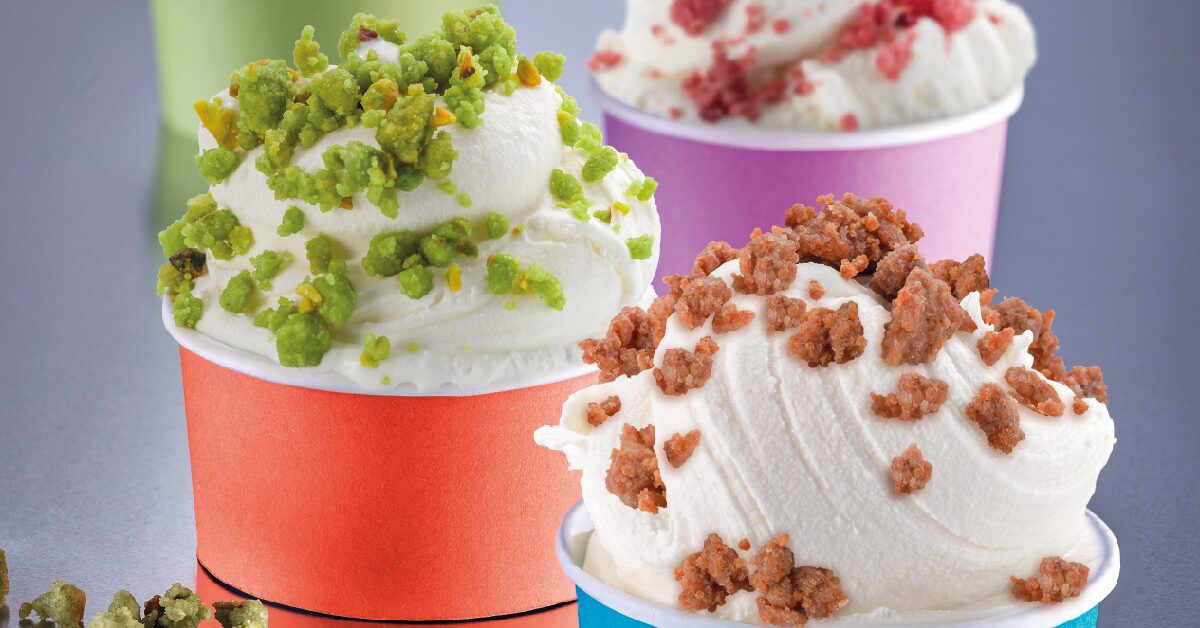How To Improve The Texture of your Ice Creams Through Stabilizers, Thickeners & Emulsifiers
Whatever’s related to the world of stabilizers, thickeners and emulsifiers unjustly has a negative reputation, not only among consumers but sometimes also those who employ these products in the making of artisanal ice cream. In this article, we’re going to shed some light on this topic by giving you some practical examples and instances of how additives can prove positive for your business.
March 16, 2022
A Case For Additives In Ice Cream
Many turn up their noses at the first mention of stabilizers, thickeners and emulsifiers, associating them with the idea of something created in a lab, therefore artificial, which would undermine the alleged purity and quality of the true artisanal ice cream. We’ll therefore start this article off with no further ado by debunking such a myth: thickeners are, for the most part, naturally sourced.
So what are the advantages of using thickeners such as guar and carob? By taking water in, they make ice-cream mixes stickier; moreover, they slow down both the formation of ice when the cabinets inside your parlor defrost and the melting process of ice cream (which makes parents with small kids really happy!). Different thickeners may develop either of these two features in a more marked way, and this is why they’re usually employed in pairs or groups. Once solubilized, a stabilizer can ensue two different processes: jellification and thickening, which apart from looking very much alike on the surface, underlie very different chemical processes. Examples of ice-cream thickeners are carrageenan, sodium alginate and tara gum.
Additives In Ice Creams: Should We Use Them Or Not?
Additives are easily recognizable on any product’s label because they are referred to through the letter E followed by a number, which is their European official form of identification. As for all things in life, the problem lies in overdosage, which by the way doesn’t happen when sticking to tried and tested recipes for the usage of neutral bases: we indeed normally add 5 grams of additives for each kilo of ice cream, a ridiculous quantity which comprises stabilizers, thickeners and emulsifiers, all working together to improve the texture of ice cream.
What happens, though, when we overdose additives, whose main purpose is to make ice cream thicker and stickier? We get an ice cream that is too jelly, hard to spread and with an unpleasant texture. What to do then? Use an ice-cream base with a correct balance of additives or opt for an additive-free complete ice-cream base, so as to get just the right creaminess even without the addition of the infamous “E” elements.
Another viable solution is replacing a neutral base with a mix of plant fibers: alongside with being packed with healthy components, they suit any kind of recipe without altering the taste of the final product, to which they add creaminess and spreadability. Plant fibers such as the ones extracted from baobab and corn, which you can find in our special selection of high-fiber ice-cream bases, can be used in any preparation, both milk bases (such as our Base 40) and water bases (such as our Efrutta). As they’re soluble fibers, they possess a series of additional advantages such as:
- Higher digestibility in comparison to other kinds of fibers;
- Better resistance to thermal treatments;
- Increased stability in pH adjustments.
If you haven’t tried them yet, this is the right moment to start experimenting: contact us for more info about our products and how to use them for your artisanal ice cream!




